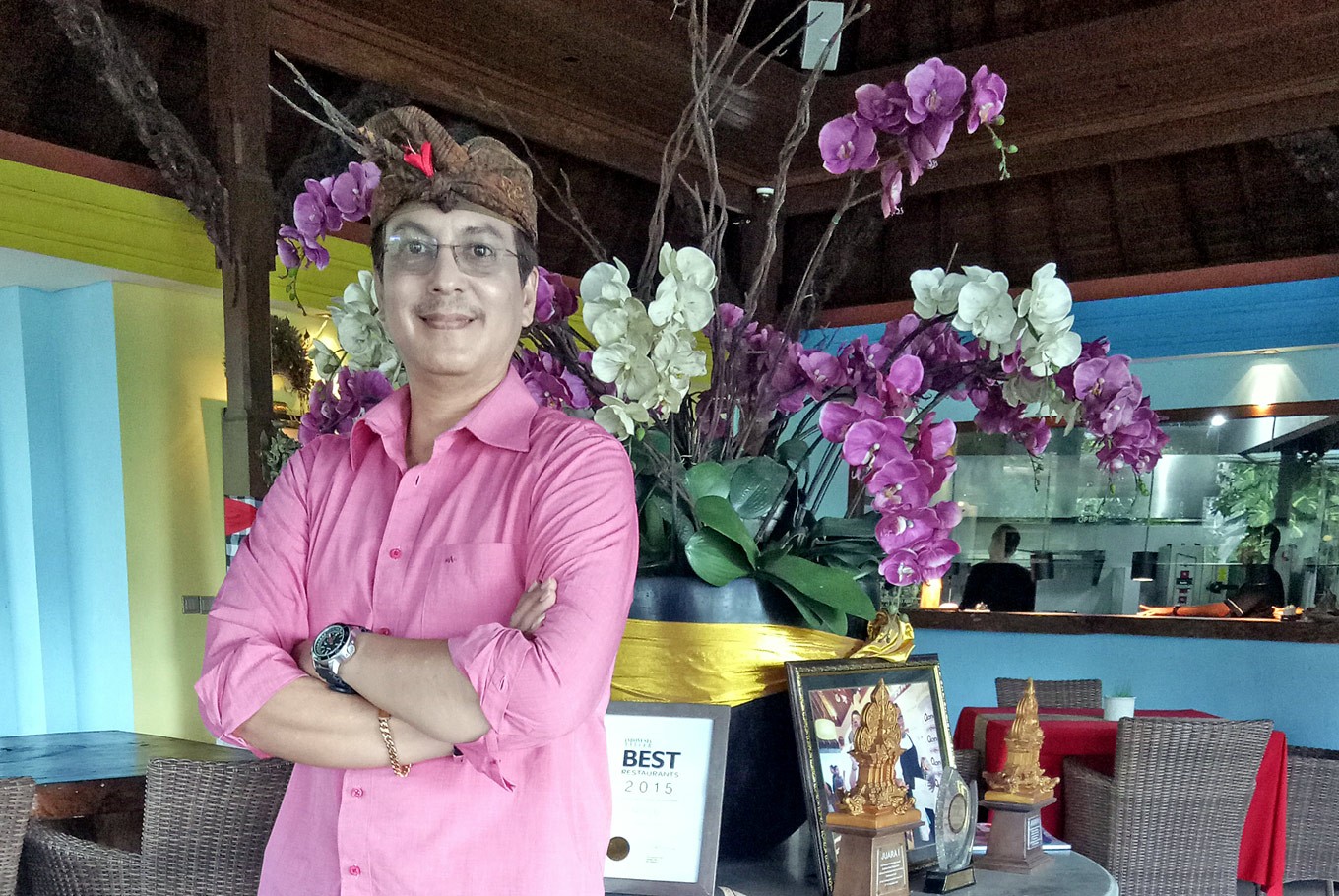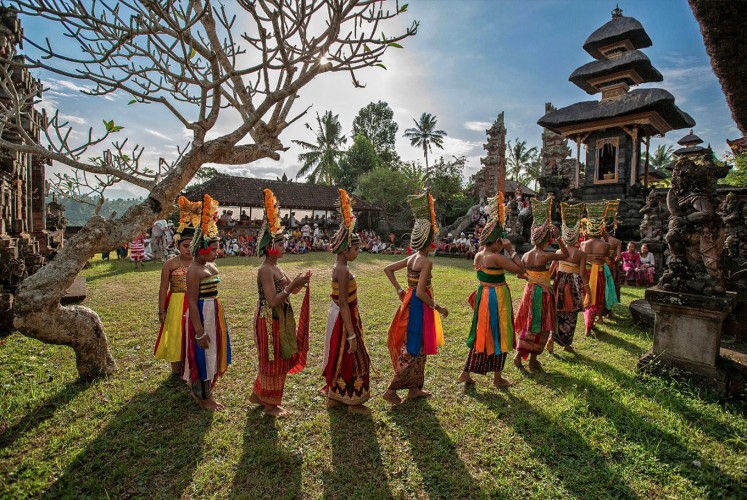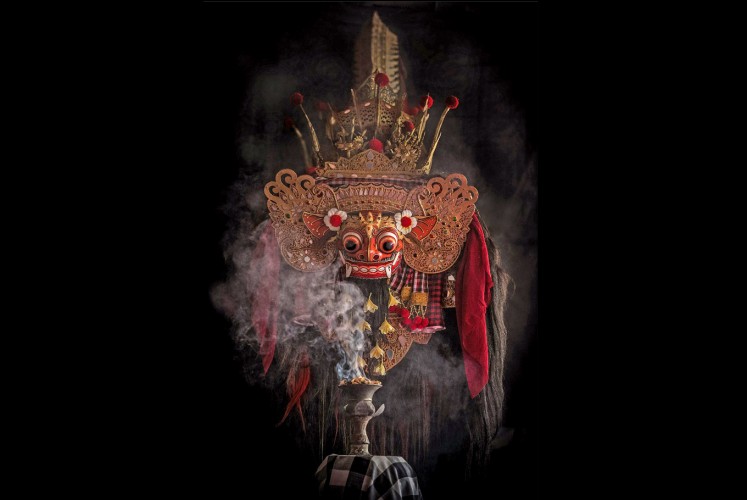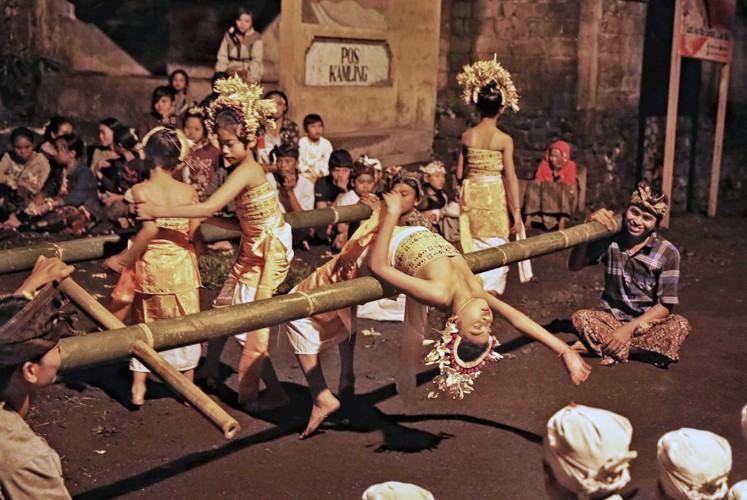Mario Blanco: Stepping out of his father's shadow
Mario is the only son of world-renowned painter Antonio Blanco, who lived much of his life in Bali and was famous for his fantastic artistic creations.
Change Size
 A colorful painter: Balinese painter and photographer Mario Blanco poses in Rondji Restaurant in the Blanco Renaissance Museum, Ubud, Bali. (JP/Utami Diah Kusumawati)
A colorful painter: Balinese painter and photographer Mario Blanco poses in Rondji Restaurant in the Blanco Renaissance Museum, Ubud, Bali. (JP/Utami Diah Kusumawati)
Being the only son of a legendary artist is not easy, a fact Mario Blanco, an artist and photographer from Bali, knows all too well.
Mario is the only son of world-renowned painter Antonio Blanco, who lived much of his life in Bali and was famous for his fantastic artistic creations.
As Antonio’s only son, Mario has carried the burden of expectations from those who want him to be as excellent as his father. For most of Mario’s career, his father’s reputation and success seemed to overshadow his own path.
However, he has managed to find his own way.
“My father never taught me or wanted me to paint. That is one thing that people never know or understand,” Mario said at the Rondji Restaurant in the Blanco Museum in Ubud, Bali, recently.
“My father always said to me that he was a painter, not a teacher. I should find another teacher,” he added.

Wearing modern-style traditional Balinese clothing and a Balinese headdress called an udeng, Mario said he had not really been interested in art when he was young.
Like many other Balinese teenagers, Mario’s interest was car racing. Even after graduating from senior high school, he still seemed unsure about stepping into the art world.
Meanwhile, his father, Antonio, suggested that he start applying for university to study either medicine, economics or law.
“My father was a wise and smart person. He was actually testing me to see whether I really wanted to take those majors chosen by him,” he said.
It was a hard time for him. He was at a crossroads and did not know which way to turn.
Mario then spent almost two years at home doing nothing while his other friends either started working or studying at university. Then, something stirred in his heart. He began to realize that his true calling was art.
“I heard that Udayana University, the first university established in Bali, had opened admissions for art students. So, I applied there and got accepted. I was quite surprised at the time,” he said.
At first, it was hard for him.
Mario recounted the time when he, as a freshmen, was asked by one of his lecturers to draw a sketch in front of the class even though he had no experience at all in art.
“I broke out in a cold sweat. I could not draw. They might think, ‘how could the son of a famous painter not be able to sketch?’”
The experience was a turning point for him. He worked hard, learning to draw and paint. His determination eventually turned to success. He started to gain the confidence of his lecturers and was appointed the head of the fine arts students’ organization at the university.

After careful consideration, Mario decided to tell his father that he had decided to follow in his footsteps.
“When I told him about my studies, he did not say a word. But deep down I was sure he already knew about my decision from the very beginning,” he said.
Even though Antonio often seemed aloof to his only son; nevertheless, both son and father maintained a close relationship. They cared for one another.
Mario, for example, admired Antonio greatly, despite the fact his father had never passed on his expertise in painting. For Mario, Antonio was a caring father who tried hard to spend time with his three daughters and one son.
“We usually had quality family time together. He would start by asking ‘how is your day?’ and hug us,” he explained.
“We always talked like best friends in that short 15 minutes he had for us.”
It was those short moments where his admiration turned into a deeper feeling of trust and respect for his father. He did not want to disappoint his father, who cared so much about his children.
“That is why when my father passed away, I blacked out. I did not know where to start and was afraid to have let him down, especially after he had trusted me to continue what he started; the Blanco Renaissance Museum,” he said.
Mario’s passion for art has helped him find a way, despite the challenges he faced following Antonio’s passing.
Mario remembered that Antonio had asked him to continue developing the museum. He did just that and succeeded in fulfilling his father’s dream, as well as his own.
The museum was built in 1998. In 2014, it was listed as one of the top 10 museum destinations in Indonesia according to the travel website TripAdvisor.
Other than exhibiting Antonio’s paintings, the museum, with its many lush trees, has also become a legal breeding place for 350 birds, including Bali mynas, palm cockatoos and hornbills.
“Even local zoos have asked us to train them to breed endangered birds,” Mario said.

People have also started to acknowledge his artistic talent as a painter and art photographer who focuses on preserving traditional Indonesian culture.
In fact, Mario is often invited to exhibit his pieces in other countries including in the Australian cities of Melbourne and Sydney, and most recently in Eztergom, Hungary.
This year, Mario has received several awards for his art photography, including at the Foundation’s International Arts Award and from Hungarian master photographer, Eifert Janos.
“This year my pieces will also be exhibited in Spain. I hope it will be successful in promoting Indonesia’s traditional culture to the world.”









